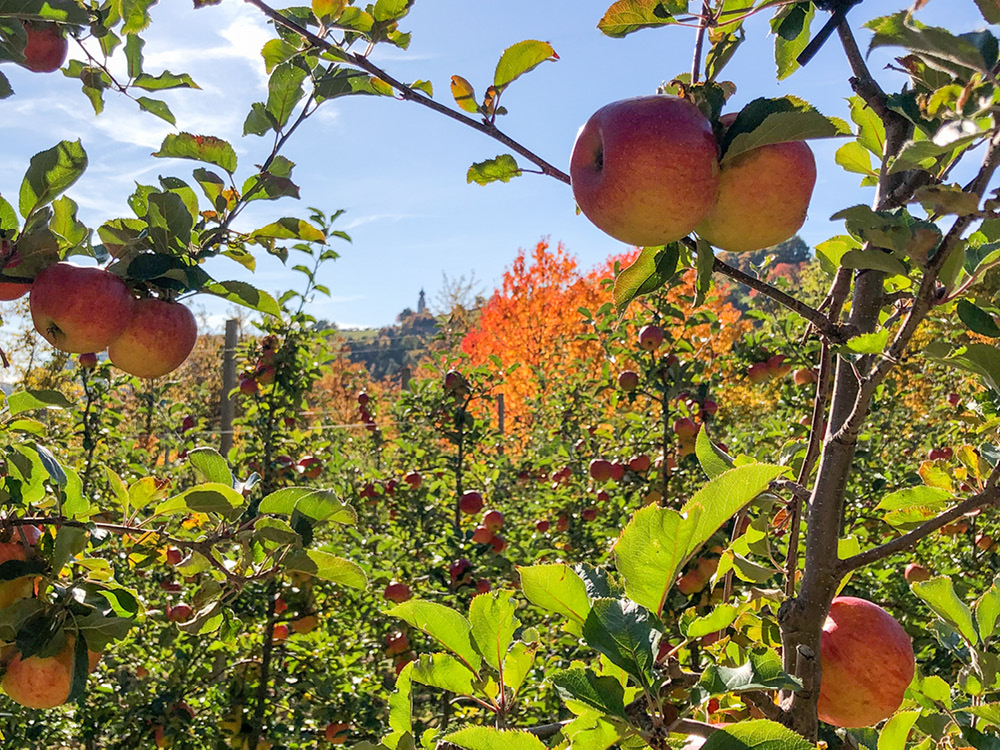Why do tree leaves decide to take on these beautiful shades in autumn?
The beginning of autumn in the apple orchard. Temperatures drop, days get shorter, and sunshine hours decrease. Even here in the mountains. The reduction in light causes the tree to reduce photosynthesis, which converts carbon dioxide and water into glucose and oxygen.
Photosynthesis needs chlorophyll, the green pigment, especially in sunny seasons.
Color me beautiful. In autumn, chlorophyll is no longer needed. The tree breaks it down and stores it in the roots, branches, and trunk until spring. The green leaves disappear, giving way to yellow, red, and orange shades. All summer long the pigments remain hidden "under" the chlorophyll.
The leaves fall off. Eventually, when enough chlorophyll and other nutrients have been taken up, the tree stops supplying water to the leaves. A separation forms between the twig and the petiole, and the first gust of wind will take the leaves with it. Winter rest can begin.
Life cycle. Leaves (and chlorophyll) are necessary for photosynthesis, but they require a lot of energy from the tree and water. In winter, with short days and a water shortage, the tree will shed its leaves to survive, thus focusing on its "internal" health.


